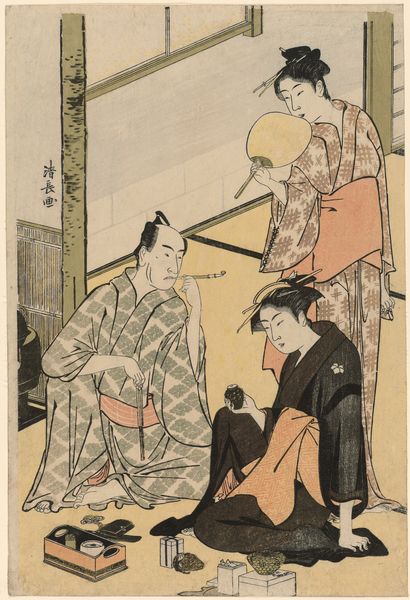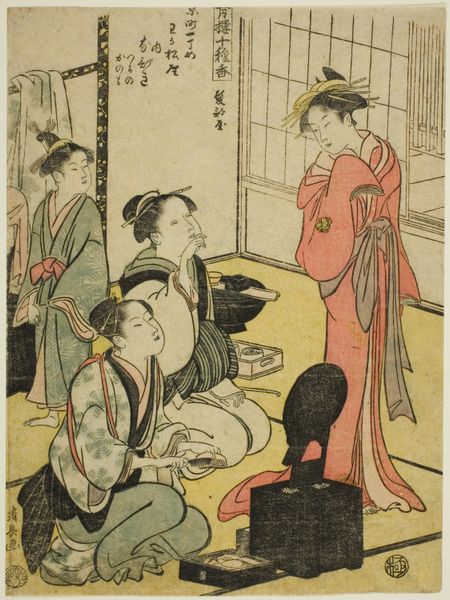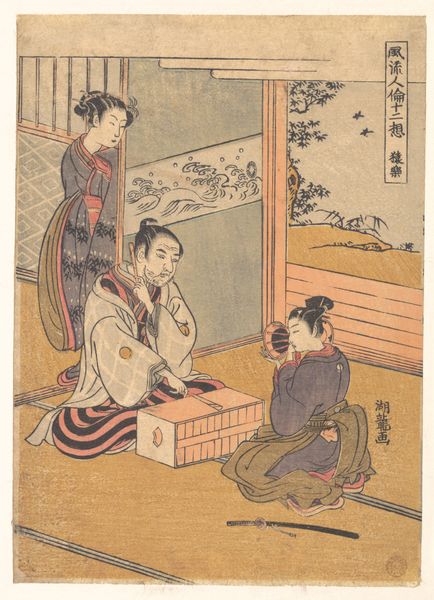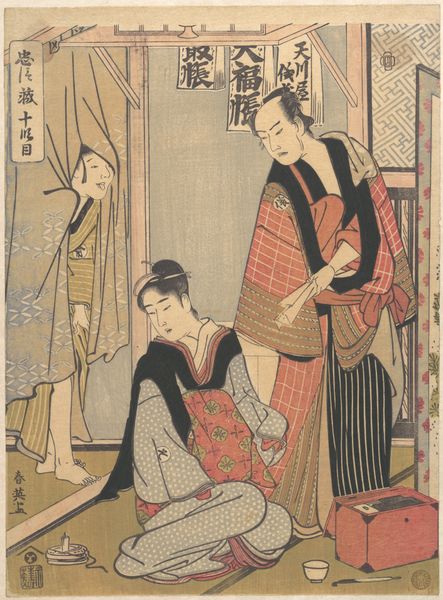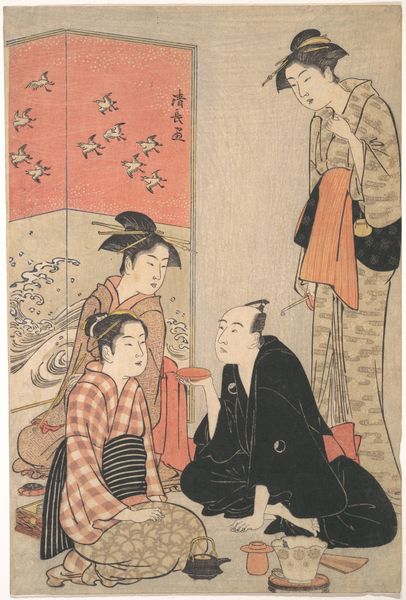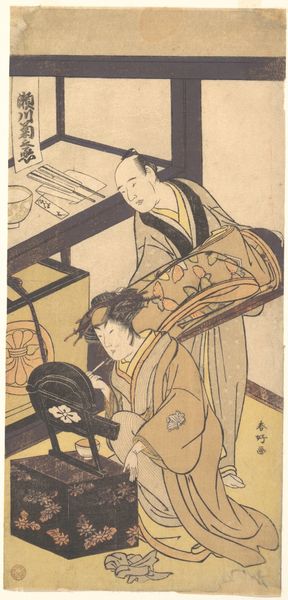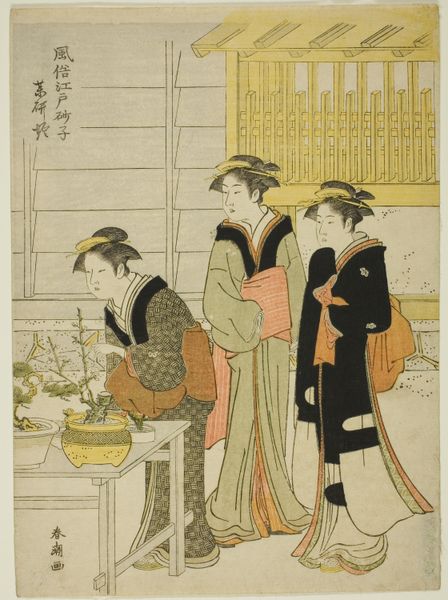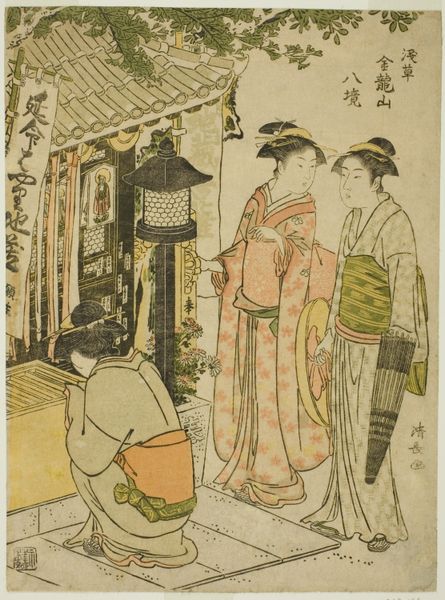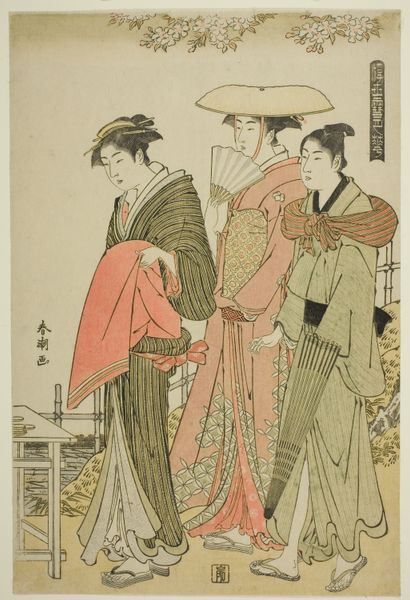
Snow, from the series "Snow, Moon, and Flowers of the Floating World (Ukiyo setsugekka)" c. 1784 - 1785
0:00
0:00
print, woodblock-print
# print
#
asian-art
#
caricature
#
ukiyo-e
#
woodblock-print
#
group-portraits
#
genre-painting
Dimensions: 36.5 × 25.5 cm
Copyright: Public Domain
Curator: Let's explore "Snow," a print from the series "Snow, Moon, and Flowers of the Floating World," crafted by Katsukawa Shunshō around 1784 or 1785. The Art Institute of Chicago houses this beautiful ukiyo-e woodblock print. Editor: My first impression is one of quietude, a sort of restrained domesticity. The figures are elegantly posed, but there’s a distinct sense of formality—a careful staging. Curator: Absolutely. Consider the compositional elements. The artist masterfully balances the figures within a defined interior space, demarcated by strong horizontal and vertical lines from the screen and flooring. Note the subtle gradations of color, indicative of Shunshō's skill with the medium. Editor: But who are these people, and what are they doing? To me, this isn’t simply an arrangement of shapes and colors. This represents a slice of life within the pleasure districts, perhaps. Are we seeing courtesans and their patron engaged in some ritual, preparing tea or perhaps partaking in a snow-viewing gathering? Curator: Your reading certainly illuminates its social context. Genre painting in ukiyo-e often captured the fashionable life and entertainments of Edo-period Japan. But observe how Shunshō manipulates space, flattening the perspective, embracing an aesthetic more concerned with the overall design than strict realism. The composition favors visual harmony above all. Editor: But denying the subjects' identities and potential social commentary feels like a disservice! Ukiyo-e were mass-produced, bringing art to a broader public. Wasn't this also a way of portraying and maybe subtly critiquing the social structures of the time? Even the positioning of the figures suggests a hierarchy. Curator: While acknowledging social contexts adds layers of interpretation, the strength of this particular piece also lies in its formal achievement. The restrained palette, the elegant lines, and the carefully orchestrated arrangement contribute to a harmonious visual experience, quite apart from social critique. Editor: I suppose that a certain beauty rests in the print's formalism and restrained visual expression, as well as what we know—or think we know—about its creation. Curator: Yes, and that intersection of formal skill and cultural significance offers a richer understanding of this serene yet complex artwork.
Comments
No comments
Be the first to comment and join the conversation on the ultimate creative platform.
